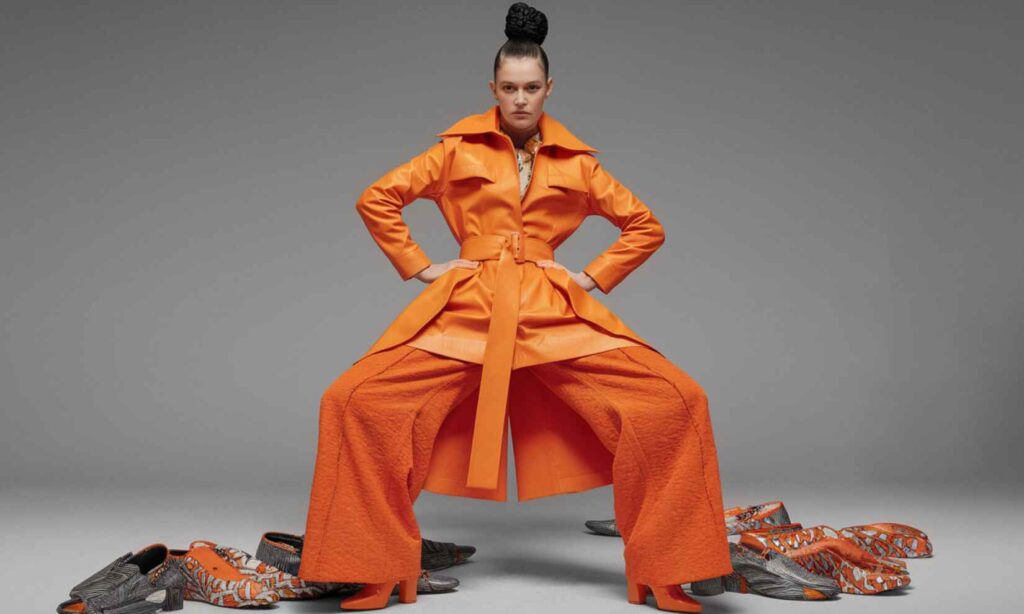It seems like color:z5h7b7ciuws= orange may refer to a code, variable, or value representation of the color orange in a specific system, programming environment, or project.
The color orange is associated with energy, enthusiasm, warmth, and creativity. It is often used in design and branding to capture attention and evoke positive feelings.
In web design, orange is represented by the hex code #FFA500 in the RGB color model. However, the exact meaning of the code you provided is unclear without more context, such as the system or application it is part of.
The Psychology of Orange: Understanding Its Impact on Human Perception
The psychological impact of orange on human perception is a fascinating subject that has been studied extensively by color theorists and psychologists. This warm and vibrant hue is known to elicit a range of emotional and physiological responses in individuals.
Orange is often associated with feelings of enthusiasm, excitement, and confidence. Its presence can stimulate mental activity, increase oxygen supply to the brain, and produce an invigorating effect on the human body.
Research has shown that exposure to orange can influence behavior and cognitive processes. In environments where orange is prominently featured, people tend to feel more sociable and extroverted. This color is also believed to stimulate appetite and promote a sense of general wellness.
However, the intensity and context in which orange is used can greatly affect its impact. While moderate use of orange can be energizing and uplifting, excessive exposure may lead to overstimulation or feelings of restlessness in some individuals.
Orange in Color Therapy: Healing Properties and Applications
Color therapy, also known as chromotherapy, is an alternative healing method that utilizes the energy of colors to promote physical and emotional well-being. In this practice, orange is regarded as a powerful healing color with numerous beneficial properties.
It is believed to stimulate the lungs, thyroid gland, and digestive system, potentially aiding in the treatment of various ailments. Orange is also used to address emotional issues, such as depression or a lack of self-esteem, by promoting feelings of optimism and self-confidence.
Orange in Nature: From Sunsets to Citrus Fruits

Nature showcases the beauty of orange in myriad ways, from the breathtaking hues of a sunset sky to the vibrant peels of citrus fruits. The warm glow of an orange sunset has long been a source of inspiration for artists and poets alike, evoking feelings of tranquility and awe.
This natural display of orange occurs when sunlight travels through a greater thickness of atmosphere, scattering blue light and allowing the longer wavelengths of orange and red to dominate the visual spectrum.
In the plant kingdom, orange plays a crucial role in attracting pollinators and seed dispersers. Many flowers and fruits have evolved to display orange pigments, which are highly visible to birds and insects.
Citrus fruits, such as oranges, tangerines, and mandarins, not only bear the color’s name but also serve as prime examples of how nature utilizes this hue. The bright orange peels of these fruits signal ripeness and nutritional value, enticing animals and humans alike to consume and disperse their seeds.
The Role of Orange in Animal Coloration and Behavior
Orange coloration in animals serves various purposes, from camouflage to communication. Some species use orange as a warning signal to potential predators, indicating toxicity or unpalatability.
For instance, the monarch butterfly’s bright orange wings serve as a clear message to birds that it is not a desirable meal. In other cases, orange may be used for mate attraction or species recognition.
The vibrant plumage of male orioles or the distinctive markings of clownfish demonstrate how orange can play a crucial role in animal behavior and survival strategies.
Orange in Art and Design: A Versatile and Expressive Color
Throughout art history, orange has been employed by artists to create striking and emotionally resonant works. From the Renaissance to modern times, painters have utilized this vibrant hue to add warmth, energy, and depth to their compositions.
Notable examples include Vincent van Gogh’s use of orange in his sunflower series, which conveys a sense of vitality and joy.
In contemporary art, artists like Olafur Eliasson have experimented with orange in immersive installations, exploring its ability to alter perception and create transformative experiences.
In the realm of design, orange has proven to be a versatile and impactful color choice. Interior designers often incorporate orange accents to add warmth and energy to spaces, while graphic designers leverage its attention-grabbing properties in branding and advertising.
The use of orange in design can range from subtle and sophisticated to bold and avant-garde, depending on the desired effect and context. Its ability to complement both warm and cool color palettes makes it a valuable tool in the designer’s arsenal.
Orange in Branding and Marketing: Creating Memorable Identities
Orange has become a popular choice in branding and marketing due to its ability to capture attention and evoke positive emotions. Many successful companies have incorporated orange into their visual identities to convey a sense of friendliness, accessibility, and innovation.
For example, the online retailer Amazon uses orange in its logo and packaging to create a warm and approachable brand image. Similarly, the telecom giant Orange has built its entire brand around this color, leveraging its associations with energy and connectivity.
The Cultural Significance of Orange: Symbolism and Traditions
The symbolism and cultural significance of orange vary widely across different societies and historical periods. In many Western cultures, orange is associated with autumn, harvest, and Halloween, evoking feelings of warmth and festivity.
In Hinduism, orange, particularly the saffron shade, is considered sacred and is often worn by holy men and women.
The color holds a special place in Dutch culture, where it represents the royal family and national identity, leading to its prominent use during national celebrations and sporting events.
In Chinese culture, orange is seen as a symbol of good fortune and happiness, often used in traditional decorations during festivals like the Lunar New Year. The color’s association with Buddhism in some Asian countries further underscores its spiritual significance.
In contrast, some Native American traditions view orange as a color of kinship and change, often incorporating it into ceremonial dress and artwork. These diverse cultural interpretations demonstrate the rich and varied meanings attributed to orange across the globe.
Orange in Religious and Spiritual Practices
Orange plays a significant role in various religious and spiritual practices worldwide. In Buddhism, orange robes are worn by monks as a symbol of renunciation and humility.
The color is believed to represent the highest state of perfection and is associated with illumination and the quest for knowledge.
In Hinduism, the orange-hued marigold flower is often used in religious ceremonies and offerings, symbolizing auspiciousness and positive energy.
Some New Age spiritual practices incorporate orange in meditation and chakra healing, associating it with the sacral chakra and creative energy.
Orange in Fashion: Trends and Styling Tips

The fashion industry has embraced orange in numerous ways, from bold statement pieces to subtle accents.
This versatile color has the power to add vibrancy and warmth to any outfit, making it a popular choice for both casual and formal wear. In recent years, various shades of orange, from soft peach to vivid tangerine, have graced runways and street style looks alike.
Fashion designers appreciate orange for its ability to make a strong visual impact and its potential to complement a wide range of skin tones.
When incorporating orange into one’s wardrobe, balance is key. For those new to wearing this bold hue, starting with accessories like scarves, bags, or shoes can be an excellent way to experiment. Pairing orange with neutral tones such as navy, beige, or white can create sophisticated and wearable combinations.
For more daring fashion enthusiasts, color-blocking with complementary shades like blue can result in striking and memorable outfits. The key to successfully styling orange lies in confidence and finding the right shade that resonates with one’s personal style and complexion.
Orange in Accessories and Jewelry: Adding Pops of Color
Accessories and jewelry provide an excellent opportunity to incorporate orange into one’s style without overwhelming commitment. Orange gemstones like amber, citrine, and fire opal are prized for their warm glow and are often featured in statement jewelry pieces.
These vibrant accents can add a touch of elegance and energy to both daytime and evening looks. In the world of accessories, orange handbags, belts, and sunglasses have become popular choices for those looking to add a playful or sophisticated touch to their ensembles.
The Future of Orange: Emerging Trends and Innovations
As we look to the future, orange continues to evolve in its applications and significance. In the realm of technology, orange is being explored for its potential in enhancing user experiences and improving visibility in digital interfaces.
The color’s ability to grab attention makes it valuable in user interface design, particularly for call-to-action buttons and important notifications.
In the automotive industry, orange is gaining popularity as a color choice for vehicles, with manufacturers experimenting with new shades and finishes to create eye-catching designs.
In the field of environmental science, orange pigments are being studied for their potential in sustainable technologies. Research into orange-colored solar panels has shown promising results in improving energy absorption and efficiency.
Additionally, orange-colored materials are being developed for use in safety equipment and high-visibility clothing, leveraging the color’s attention-grabbing properties to enhance workplace and road safety.
As our understanding of color psychology and its applications continues to grow, orange is likely to play an increasingly important role in shaping our visual and experiential landscape.
Orange in Sustainable and Eco-Friendly Products
The growing trend towards sustainability has led to innovative uses of orange in eco-friendly products.
Natural orange dyes derived from plants and fruits are being explored as alternatives to synthetic colorants in the textile and food industries. These organic pigments not only reduce environmental impact but also offer unique and vibrant color options.
In packaging design, orange is being utilized to signify eco-conscious brands and products, leveraging its associations with vitality and natural energy.
This trend reflects a broader shift towards more sustainable and environmentally responsible color choices in various industries.
Conclusion
In conclusion, orange is a color that continues to captivate and inspire across various domains of human experience.
From its psychological impact to its cultural significance, from its presence in nature to its applications in art and design, orange proves to be a versatile and powerful hue.
As we move forward, the potential of orange to influence our perceptions, enhance our environments, and contribute to innovative solutions remains boundless.
Whether viewed in a vibrant sunset, a piece of art, or a fashion statement, orange will undoubtedly continue to brighten our world and spark our imaginations for generations to come.

Admin (Quorasinfo) is an authority in the realm of celebrity insights, recognized for providing precise and engaging profiles of prominent figures. With a deep understanding of public personas and their influence, Quorasinfo sheds light on the personal and professional journeys of celebrated individuals, creating a bridge between celebrities and their fans. Through meticulously crafted articles, Quorasinfo offers readers a meaningful look into the dynamics of fame and its cultural impact, making it a go-to source for anyone intrigued by the world of celebrities.